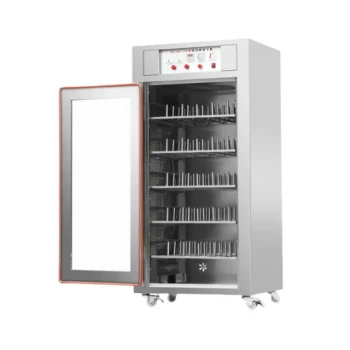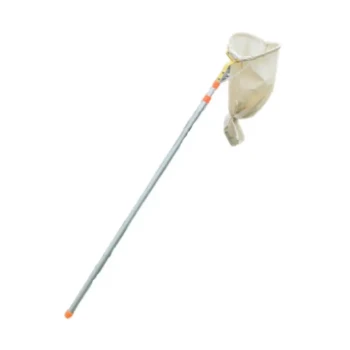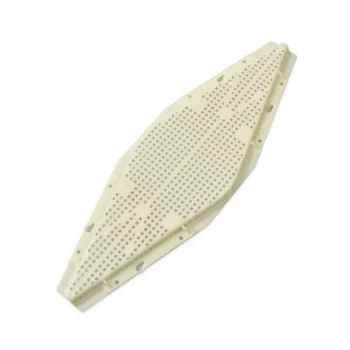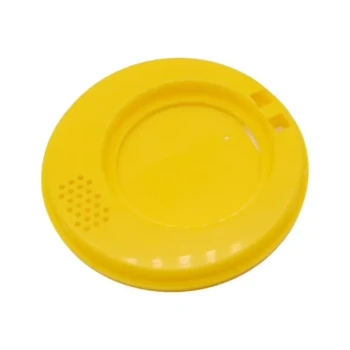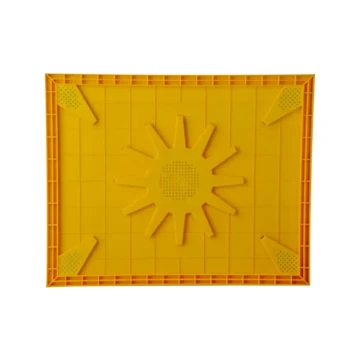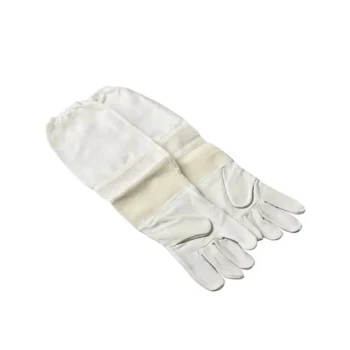To properly dry bee pollen, the standard process involves three main stages: cleaning the raw pollen, freezing it for 1-2 days to preserve its integrity, and then drying it at a low, controlled temperature of 35-40°C (95-104°F) using a dehydrator or a specialized oven. This precise, low-temperature approach is critical for removing moisture without destroying the pollen's sensitive nutrients.
The goal of drying bee pollen is not simply to remove water, but to preserve its nutritional value for long-term storage. The entire process, from immediate freezing to low-temperature dehydration, is designed to lock in quality and prevent spoilage.
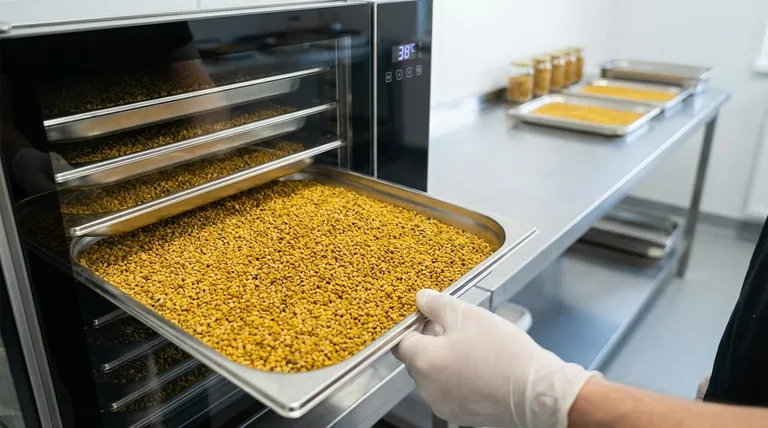
The Foundational Steps: From Trap to Dehydrator
Properly preparing the pollen before it ever sees heat is the most critical part of the process. Rushing these initial steps will compromise the quality of your final product, regardless of how well you dry it.
Step 1: Immediate and Gentle Harvesting
You must collect pollen from your traps regularly, ideally daily. Fresh pollen has high moisture content and can begin to mold or ferment within hours if left in the warm, humid environment of a hive.
Step 2: Initial Cleaning and Debris Removal
Before anything else, spread the fresh pollen on a clean surface and manually remove any visible impurities. This includes bee parts, wax, and other hive debris. A clean starting product ensures a pure final product.
Step 3: The Critical Freezing Phase
Place the cleaned pollen in a freezer for at least 24 to 48 hours. This step is non-negotiable for two key reasons: it immediately halts any enzymatic degradation, preserving peak freshness, and it helps kill potential pests or their eggs.
To prevent clumping, spread the pollen in a thin layer on trays before freezing.
The Core Drying Process: Precision is Paramount
This is where moisture is removed. Success depends entirely on maintaining a low and consistent temperature to protect the delicate compounds within the pollen.
Selecting Your Equipment: Dehydrator vs. Oven
A food dehydrator is the ideal tool for this task. It is designed to maintain low, stable temperatures and provide constant airflow, which is perfect for evenly drying the pollen pellets.
An oven can be used, but only if it can reliably hold a temperature as low as 35-40°C. Many standard ovens are inaccurate at this low end, creating hot spots that can damage the pollen.
The Ideal Temperature Range: 35-40°C (95-104°F)
This temperature range is the industry standard. It is warm enough to facilitate evaporation but cool enough to preserve the heat-sensitive enzymes, vitamins, and other beneficial compounds in the pollen.
Exceeding 40°C (104°F) will begin to degrade the nutritional quality of the pollen.
Arranging the Pollen for Optimal Airflow
Spread the frozen pollen in a single, thin layer on the dehydrator trays. Ensure the pellets are not piled up, as this will create pockets of moisture and lead to uneven drying.
Determining Doneness
The pollen is fully dry when the pellets are hard and brittle. A simple test is to take a few pellets and press them; they should "snap" or break cleanly. If they squish or feel pliable, they require more drying time.
Post-Drying and Proper Storage
Once the pollen is properly dried, two final steps ensure its longevity and purity.
Final Cleaning with Low Airflow
After drying, you can perform a final cleaning. Pouring the dried pollen pellets from one container to another in front of a low-speed fan can help blow away any remaining fine dust or debris.
Packaging for Longevity: Airtight and Dark
Immediately transfer the finished pollen into airtight containers, such as glass jars with tight-fitting lids. Store these containers in a cool, dark, and dry place. Light, heat, and oxygen are the primary enemies of dried pollen quality.
Common Pitfalls to Avoid
Mistakes in the drying process can ruin an entire harvest. Understanding these common errors is key to producing a high-quality product.
The Risk of High Temperatures
The single biggest mistake is using excessive heat to speed up the process. This "cooks" the pollen, effectively destroying the very nutritional components that make it valuable.
The Danger of Incomplete Drying
Pollen that is not dried thoroughly will inevitably grow mold during storage. Even a small amount of residual moisture can lead to spoilage, rendering the entire batch unusable.
The Impact of Skipping the Freeze
Failing to freeze the pollen immediately after collection allows its quality to degrade rapidly. This initial step is a crucial preservation measure that locks in the pollen's fresh state.
Making the Right Choice for Your Goal
Your final handling of the pollen should align with your primary objective for the harvest.
- If your primary focus is maximum nutritional value: Adhere strictly to the low 35-40°C temperature range and freeze your pollen immediately after it is cleaned.
- If your primary focus is long-term shelf stability: Ensure the pollen is completely dry by confirming the pellets are hard and brittle before sealing them in airtight, light-proof containers.
Following this meticulous process transforms your perishable harvest into a stable, high-value nutritional product.
Summary Table:
| Step | Key Action | Purpose |
|---|---|---|
| 1. Preparation | Harvest daily, clean debris, freeze for 24-48 hours | Halts degradation, kills pests, preserves freshness |
| 2. Drying | Dehydrate at 35-40°C (95-104°F) in a single layer | Removes moisture without destroying sensitive nutrients |
| 3. Storage | Final clean, store in airtight containers in a cool, dark place | Ensures longevity and protects from light, heat, and oxygen |
Produce premium, shelf-stable bee pollen with reliable equipment from HONESTBEE.
Commercial apiaries and distributors trust our wholesale-focused supplies for consistent, high-quality results. From durable dehydrators to storage solutions, we provide the tools you need to maximize the value of every harvest.
Contact HONESTBEE today to discuss your beekeeping equipment needs and secure your supply.
Visual Guide
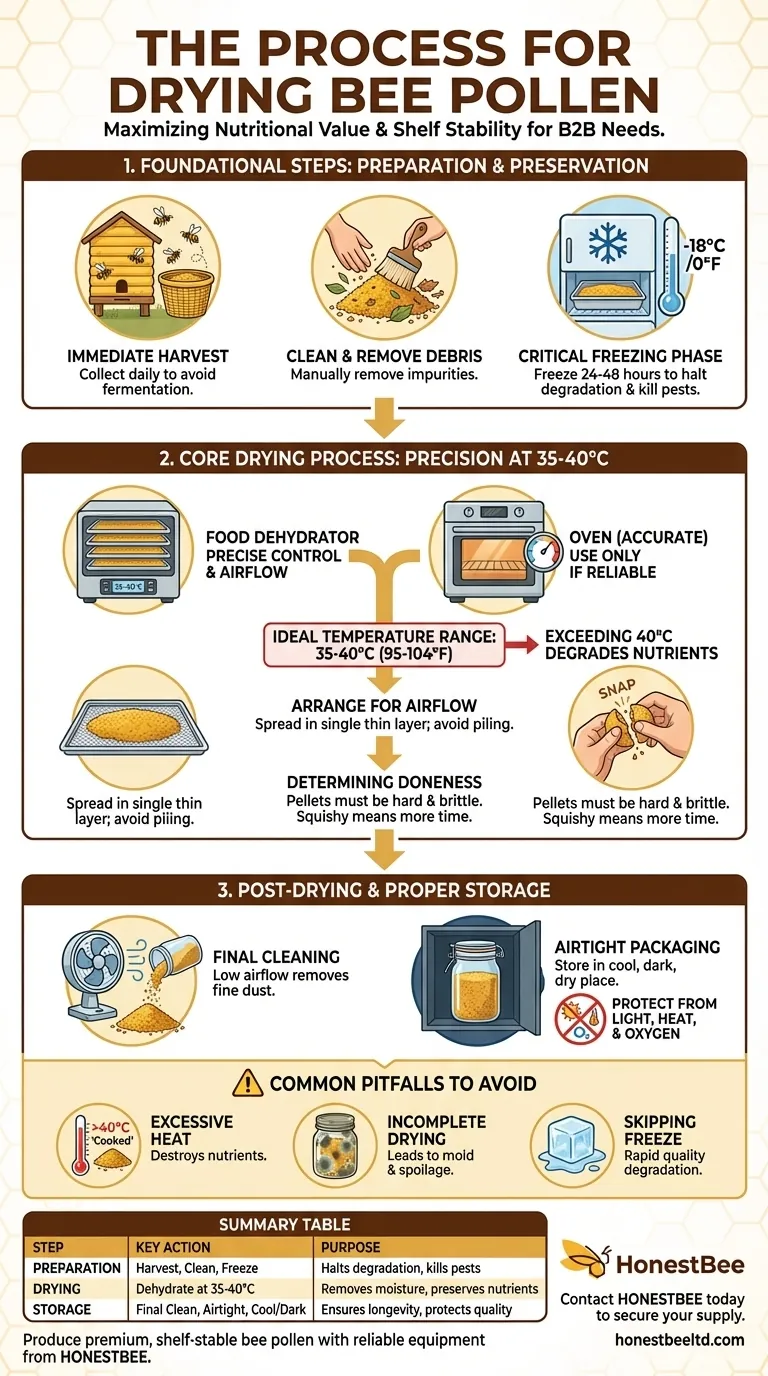
Related Products
- Economy Small Scale Honey Dryer Dehumidifier Thickening Machine
- Plastic Bee Pollen Trap Strips Comb Catcher Collector
- 30 cm Plastic Entrance Hole Bee Pollen Trap and Collector
- HONESTBEE Professional Long Handled Hive Tool with Precision Cutting Blade
- 0.5T Capacity Honey Dehumidifier Dryer with Vacuum Heating and Thickening Filtering Machine
People Also Ask
- How does temperature regulation help in managing honey moisture content? Prevent Fermentation & Ensure Quality
- How to remove humidity from honey? Protect Your Harvest from Fermentation
- How to reduce moisture level in honey? Preserve Quality and Prevent Fermentation
- What are the advantages of a condensation honey dryer? Boost Quality & Yield for Your Apiary
- How much honey can a honey dryer process and by what percentage does it reduce moisture? Optimize Your Honey Production







